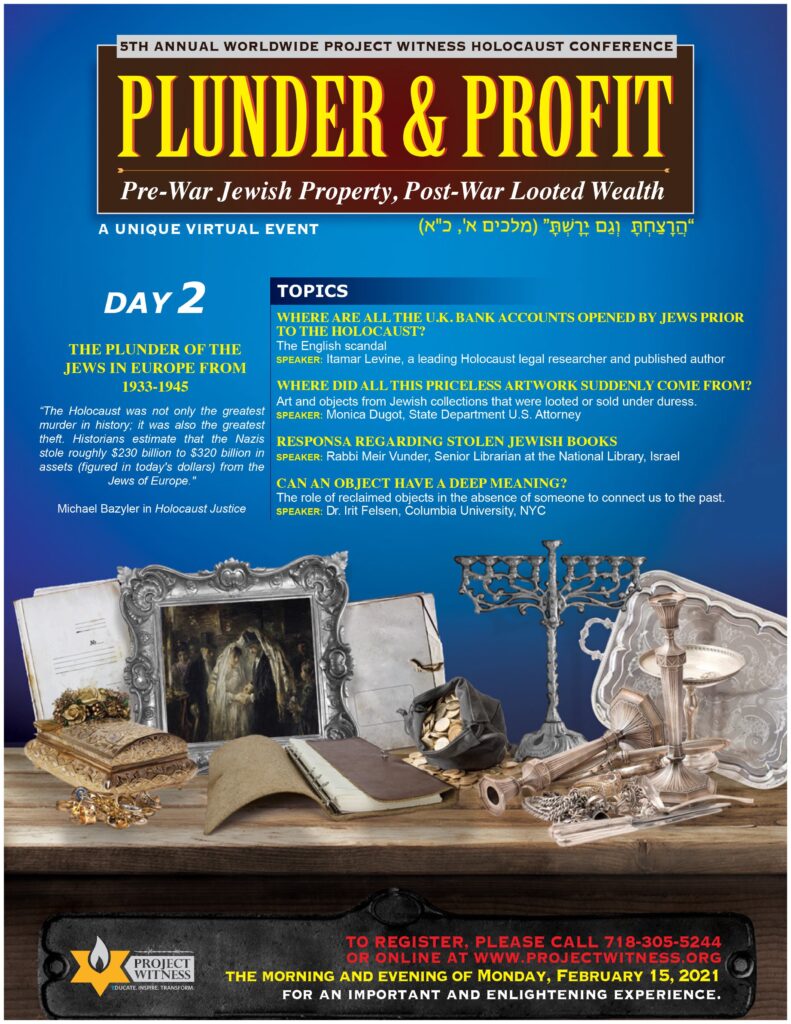“Hollow hands clasp ludicrous possessions because they are links in the chain of life. If it breaks, they are truly lost” (Dichter, 1964).
Ernest Dichter, a psychologist considered to have been the father of the psychology of consumerism, was a young Jewish immigrant who left Europe just before the Holocaust.
On Monday February 15, I will present a lecture entitled “Inanimate Survivors: Sentimental Objects from Life Before and During the Holocaust” in the context of the 5th Annual Worldwide Project Witness Conference, which will be held via Zoom this year.
Holocaust survivors started their new lives without any physical trace of their pre-Holocaust past. What does this absence mean to the children born in the new countries to which their parents immigrated after the end of the war? Many of us feel the painful absence of objects and their connective power: no objects means no tangible link to the past, to the ‘past made real’ through the objects that were part of it. Objects from the family past before the Holocaust have a special emotional value for the descendants of survivors. The objects that were touched by our grandparents, aunts and uncles whom we never met are parts of that past which our parents were violently robbed of, a past we were cut off from. As pieces of that past these objects represent the people who lived, used, touched them. We feel as if these objects, by association with the people who used them, absorbed some of their owners’ essence. Objects, unlike stories and memories, have a material presence. When we touch them, we feel as if we are connecting in a very different way with those members of our family whom we never were able to touch. We learn some things about them from the objects they created, used, or hid. Even if the objects are not from our own family, they connect us with a way of life that was there before the Holocaust destroyed it.
My talk will be shown in a pre-recorded format. More information, including the link to register online for the event, can be found by clicking on the image below.
At this very time, The Museum of Jewish Heritage in NYC is currently showing the exhibit “Ordinary Treasures”, with the same focus on the lives of our communities before the destruction wrought by the Nazis, The exhibit shares objects from the Museum’s collection, which were mostly donated by survivors and their families. To understand the depth and dimensions of what the Nazis attempted to destroy, we study not only how Jewish people died, but also how they lived. This is a unique and moving experience not to be missed. See this link for more information on the exhibition.
Irit Felsen


Leave a Reply